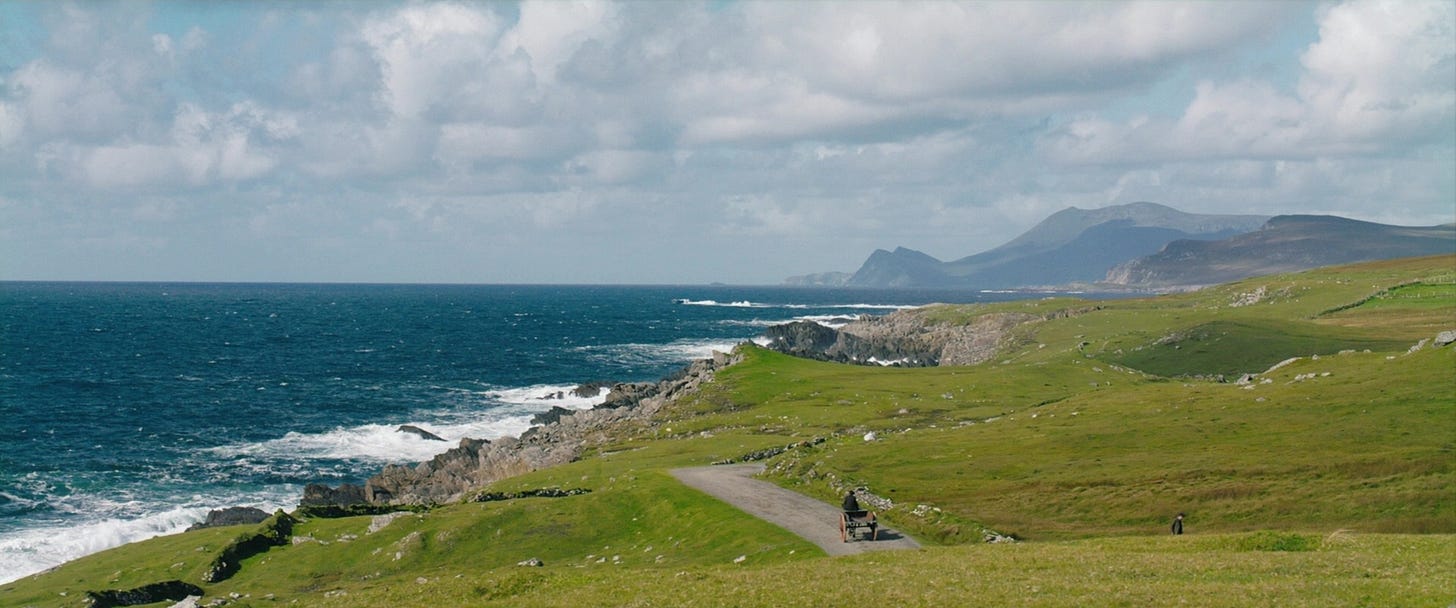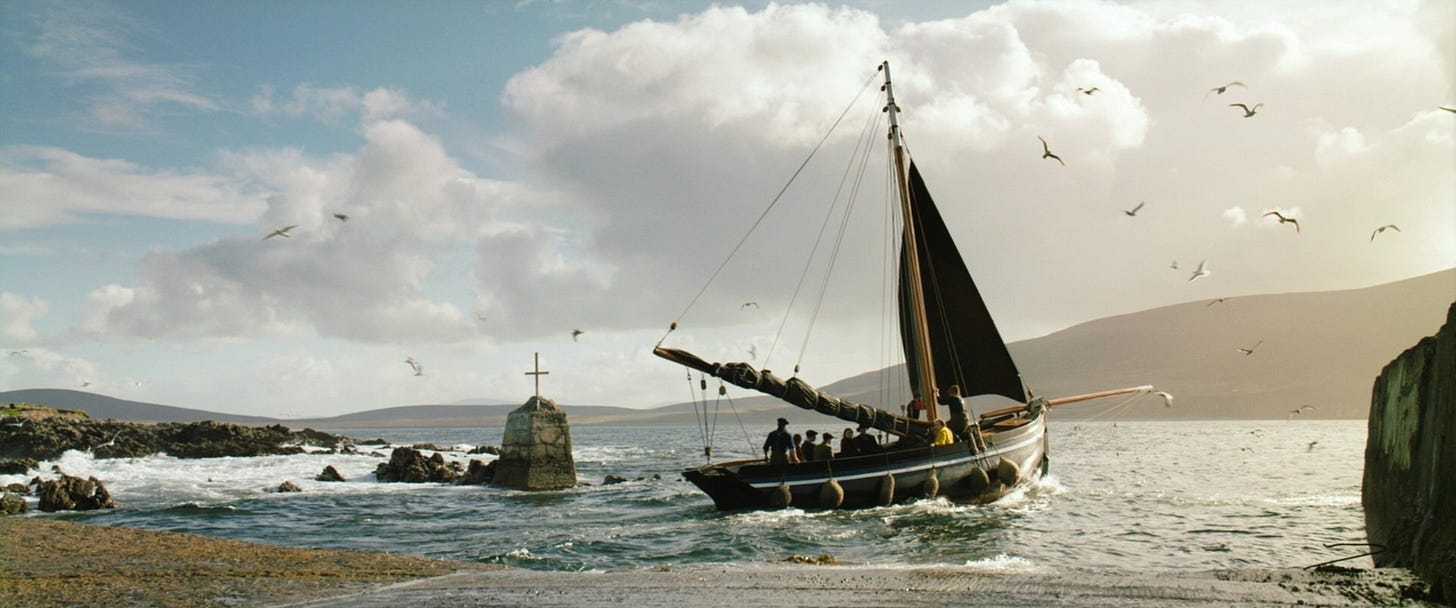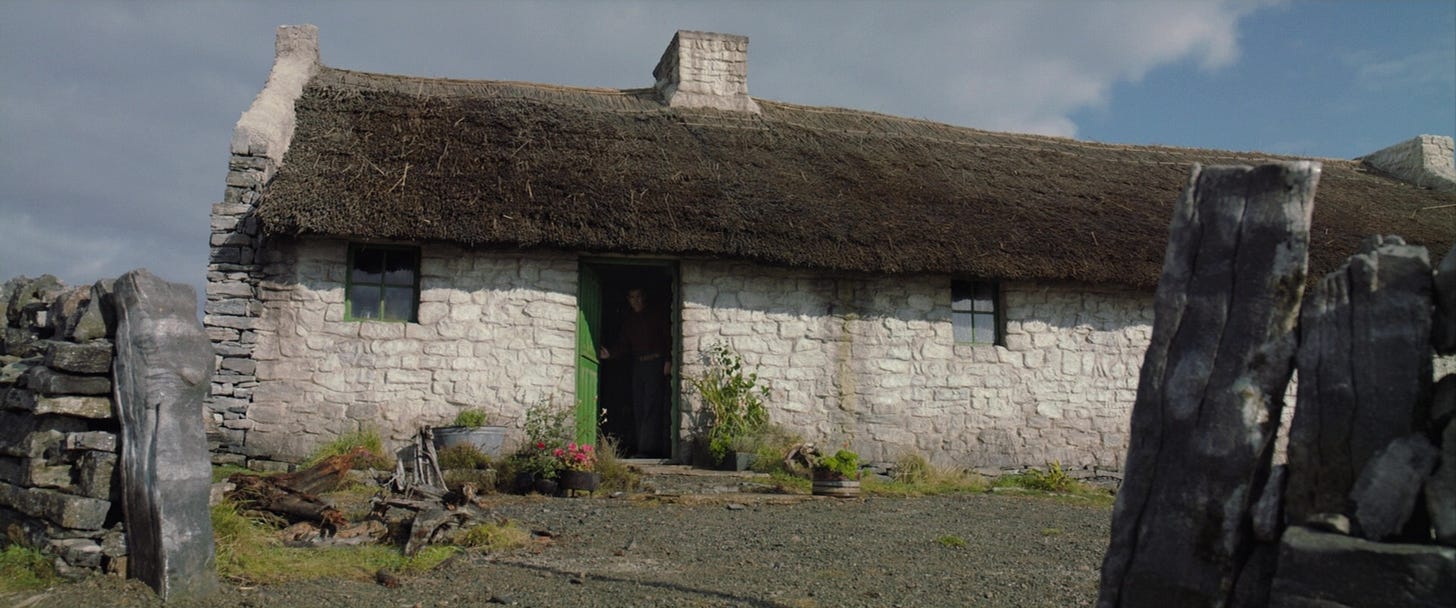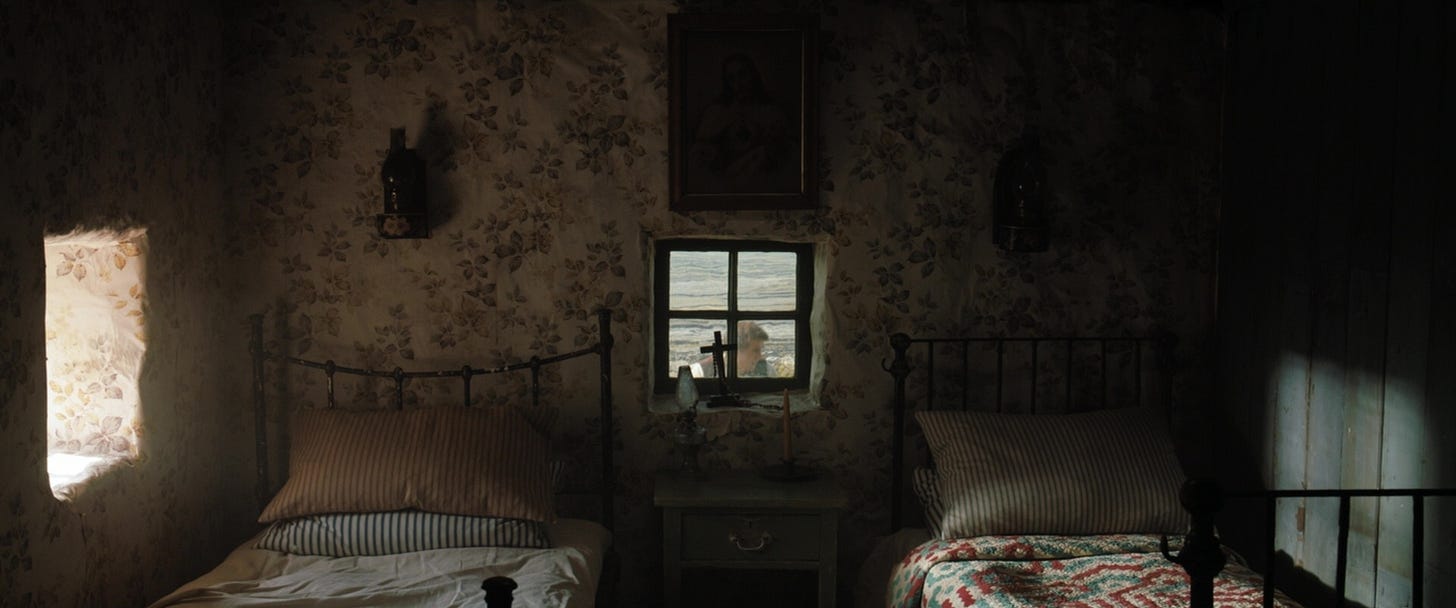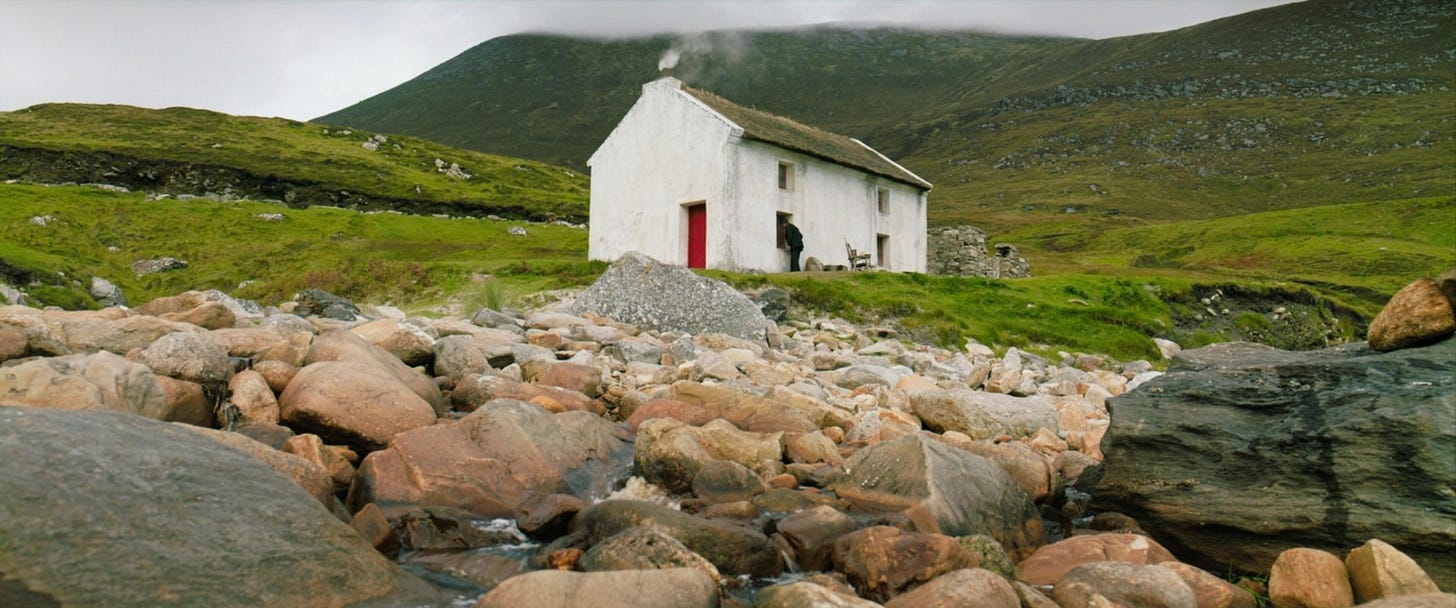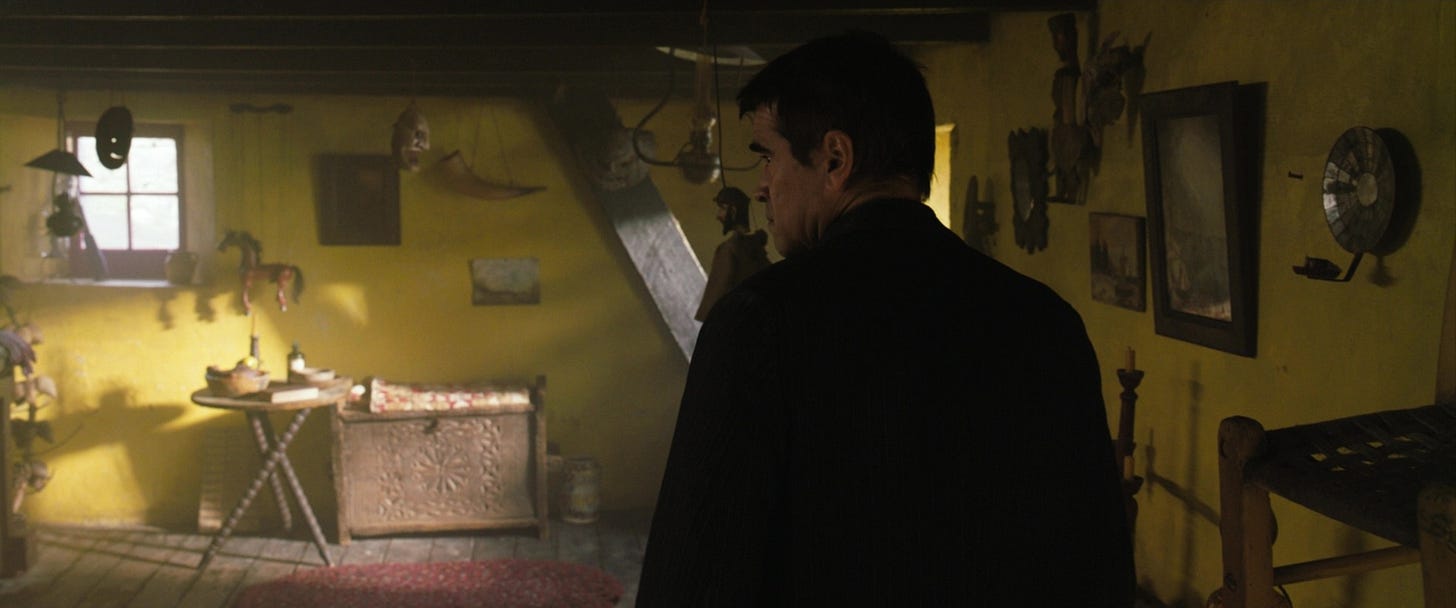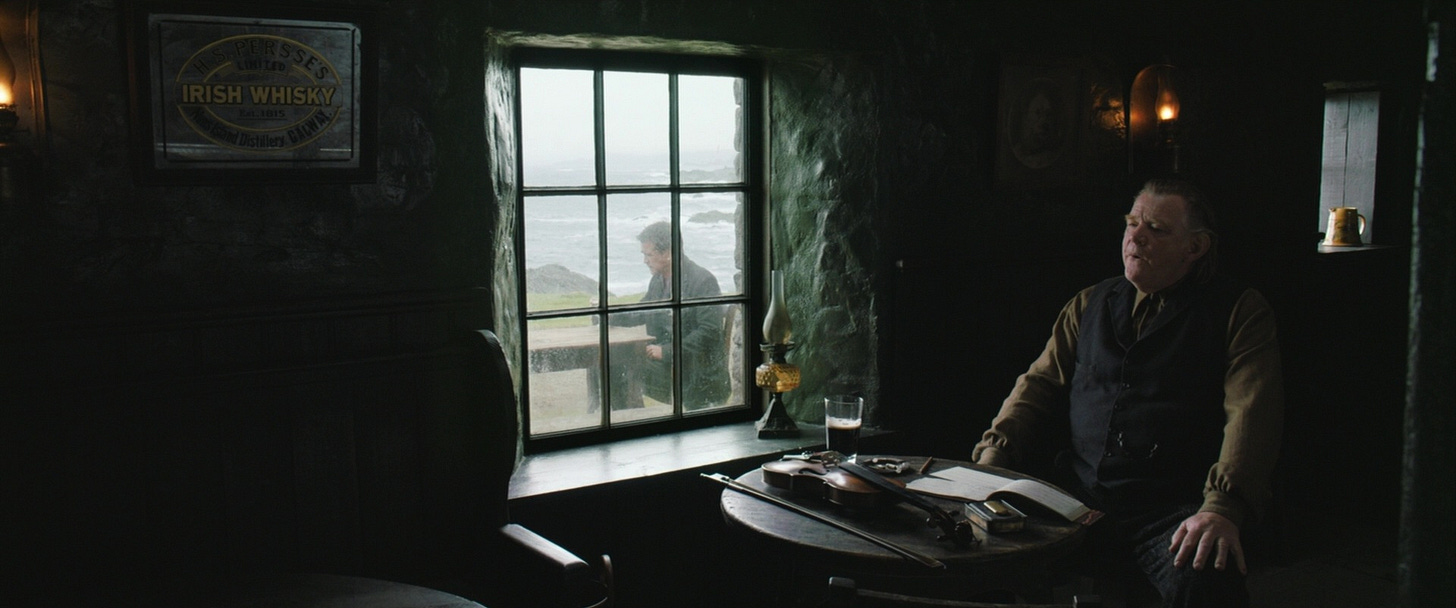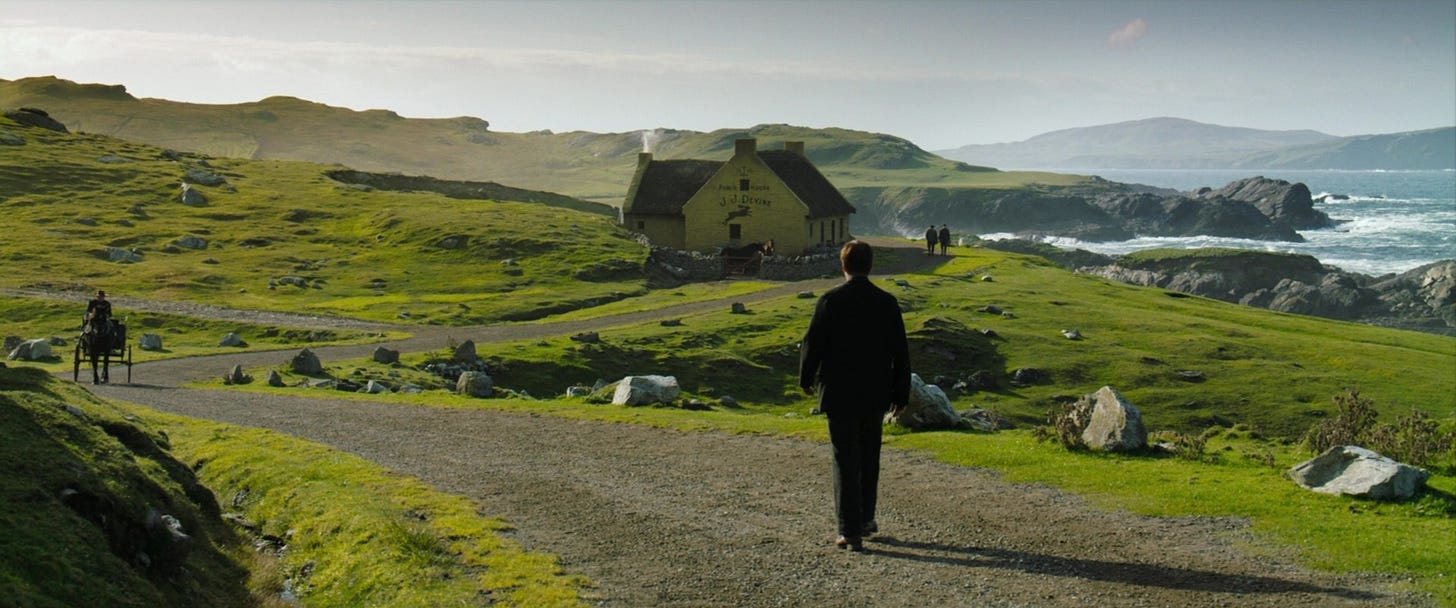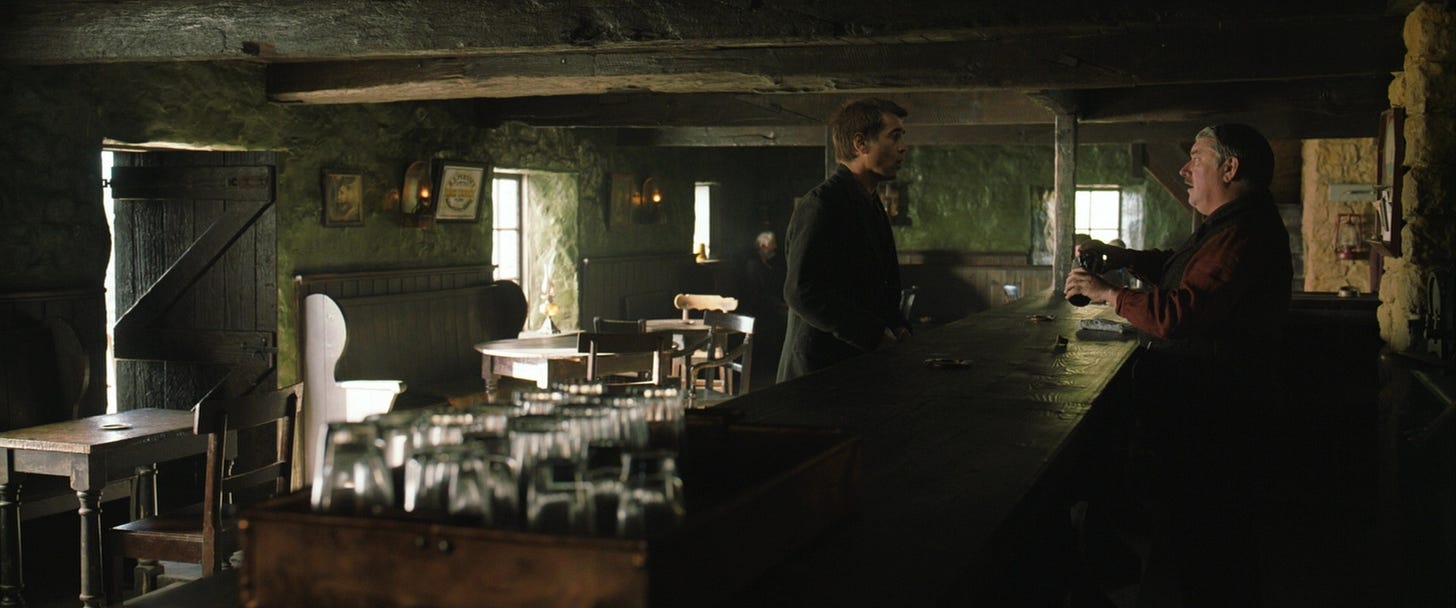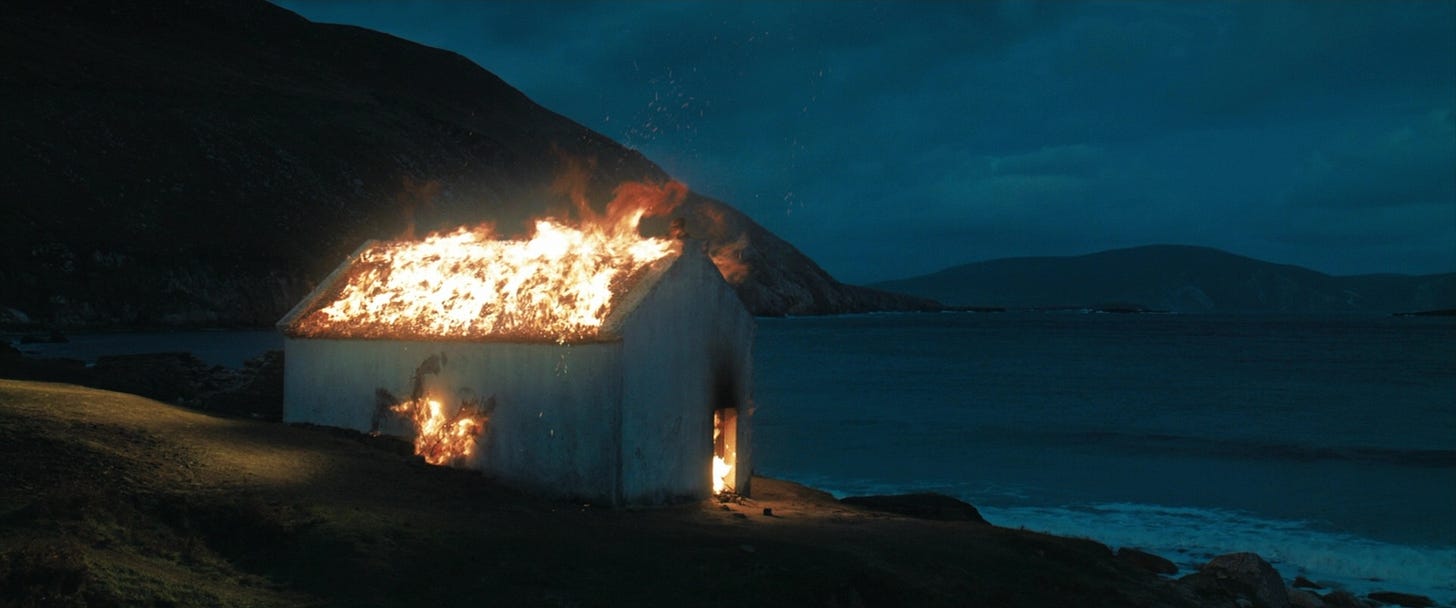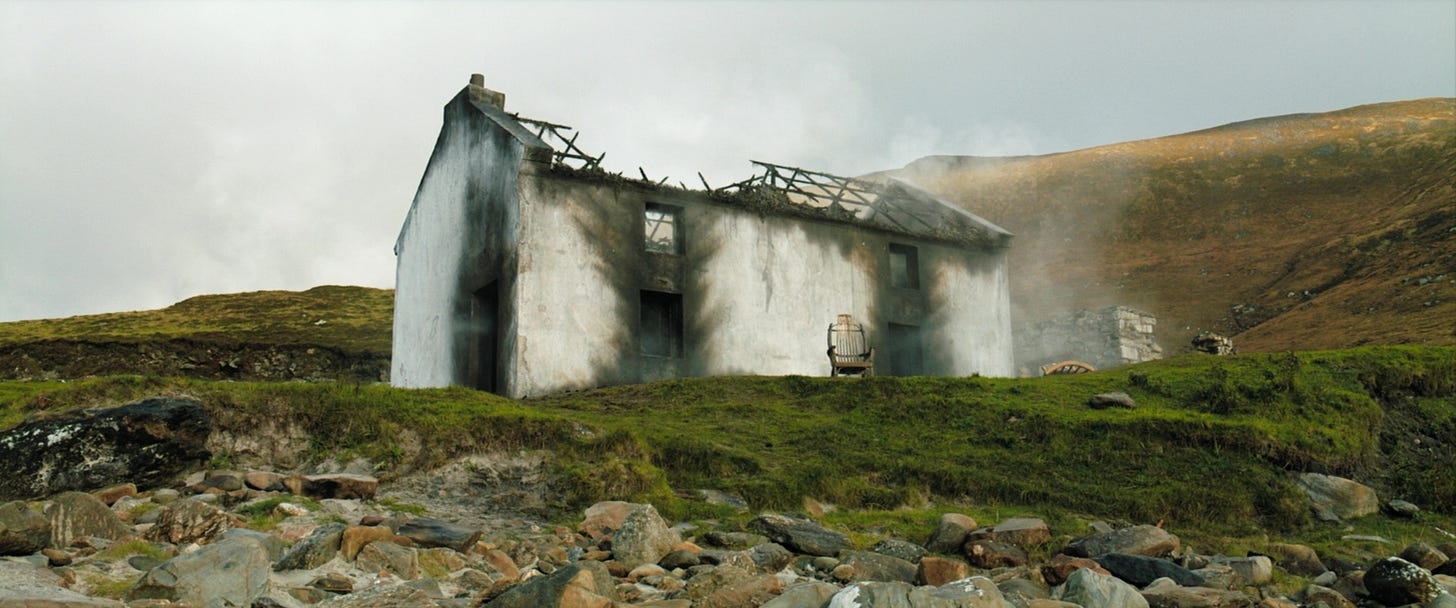Inside The Sets: The Banshees of Inisherin (2022)
An inside look at the sets of Martin McDonagh's 'The Banshees of Inisherin', with production design by Mark Tildesley and set decoration by Michael Standish.
THE ISLAND OF INISHERIN
A distinctive character in itself with its sprawling fields of lush green and imposing rock formations, the fictional island of Inisherin serves as a mirror to the emotional states and journeys of its inhabitants. Wanting ‘the visuals and the locations to be as cinematic as possible’, McDonagh set out with Tildesley and cinematographer Ben Davis to scout the Aran Islands, just off the coast of Galway, to find the building blocks for the otherworldly aesthetic he was attempting to create.
Building on location allowed for the production to take full advantage of their environment, using the islands’ differing physical geography to create picturesque, epic-like backdrops and allowing for an authentic relationship to be formed between the land and the characters. The isolating yet inspiring sparseness of the hills combined with the foreboding melancholy of the cliff faces work together to unfold the story in front of the audience, continuing the exploration of themes such as immortality, masculinity and culture.
When researching the time period of 1920s Ireland, Tildesley found that most photographs were only available in black and white, an aesthetic McDonagh specifically was trying to steer away from, but after spending time with the Aran Islanders, discovered a strong colour palette of indigo blues, blood reds and ochre yellows amongst the islands’ history and surroundings that was brought into the set builds. Due to the islands’ geography, large amounts of crew and resources were unable to brought in and resulted in production working with the locals to create the world of Inisherin, borrowing horses, carts and boats, as well as, utilising stonemasons to restore the roads.
THE SÚILLEABHÁIN FARMHOUSE
When searching for the foundations of the characters’ homes, it was found that most period-accurate buildings were in less than ideal conditions - either demolished entirely or in locations that didn’t capture the character of the countryside. However, whilst scouting on Inishmore, Tildesley discovered by the cliffside and overlooking the prehistoric fort Dún Aonghasa, the perfect place to construct the Súilleabháin’s simple farmhouse.
Using tin, metal, plywood and flagstone to create the structure and then shipping it over piece by piece, local craftspeople from the island were brought on board the production to bring a more authentic feeling to the buildings. To ensure that the home could mirror and capture its environment for the camera, the angles of the sun, sea and the monument itself were studied. Being built as though it had been ‘rooted directly into the island’s bedrock’, meant that the rocky landscape surrounding the house reflected the rough turmoil that faced the siblings.
When decorating the farmhouse, Standish and Tildesley worked with costume designer Ní Mhaoldomhnaigh on the colour palettes of the individual characters, and settled on simple greens for Pádraic’s sparse space, painting the main wall and door shades of green to reflect his earthy, farming roots. Religious iconography, crosses and images of Jesus and The Virgin Mary, also appear in the home, alongside kerosene lamps and weaving clutter, accurate and important details in keeping with 1920s Irish life.
COLM’S COTTAGE
Located by the coast is Colm’s seaside escape, an original whaling cottage settled on Keem Beach on Achill Island. Surrounded by nothing but hills, sea and sky, the cottage was the perfect place to house the tortured artist, allowing for him to be secluded enough from his fellow countrymen but still open for faraway travelling dreamers to find him. After discussing with the owner about the work that needed to be done to the build and confirming that this would be the house used for the character of Colm, Tildesley and his team began to tweak the space and incorporated new windows into the original stone to brighten up the interior.
Evoking a Van Gogh painting with its combination of bright yellow walls, red oilskin floor and cluttered surfaces, the colour palette of Colm’s home subtly reveals the drive behind the character, a romantic longing for ambition and a lingering melancholy, as well as visually setting the space apart from the earthier tones seen in Pádraic’s.
With the props all being either hand-crafted or hand-sourced, it allowed for Colm’s backstory to be developed and layered; a yearning and fascination with culture, music and storytelling meant that the cottage could be filled with varying artefacts and relics from all over the world as artists have visited the fiddle player and shared stories and gifts. One of the first items placed in the home was an early 20th century, around 1910, gramophone, alongside bundles of records accurate to the time period, as a way of connecting Colm to his love of music and the wider world itself.
Influenced again by both Van Gogh himself and his works, the home features a wooden chair similar to the one seen in Van Gogh's Chair hung on the wall. Showcasing a slightly darker side to the character’s psyche was the inclusion of Japanese masks and strange puppets, leaving a penetratingly haunting feeling but was ultimately stripped back by Tildesley and Standish after finding the objects to be too dark, instead opting for a select few of the objects for a more subtle sense of uneasiness.
“A FILM ABOUT WINDOWS”
Windows are used throughout the film in an homage to the John Ford/Western style. By separating characters through the glass or revealing their environments and actions, it forces the audience to develop their voyeuristic position and experience the characters' emotions on a deeper level by seeing the divisions and lines crossed visually.
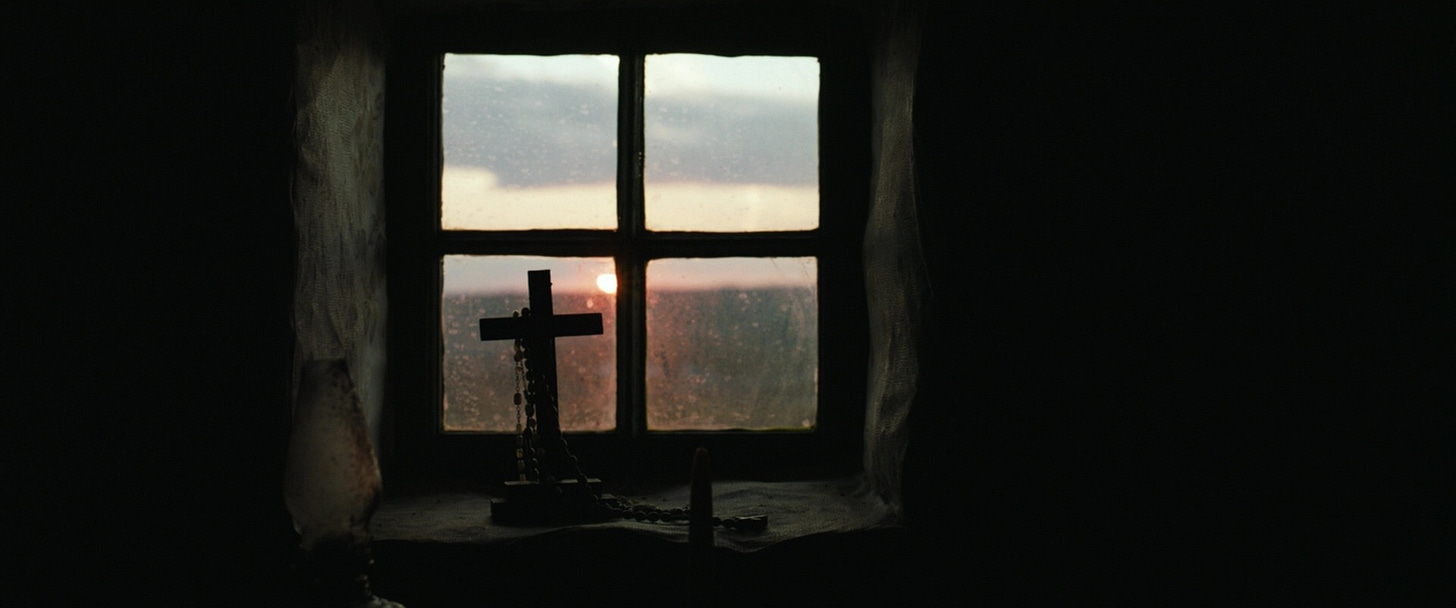
Building additional windows into the sets also allows for the audience to feel the connection between the islanders and the land itself, and see how the characters' journeys are reflected in the physical geography of the island.
THE J.J DEVINE PUBLIC HOUSE
Whilst many would laugh at the idea of a pub having to be built for filming in Ireland, in order to capture interiors, exteriors and the landscape itself, production decided to create the tavern from scratch after finding a cliff-hugging, coastal road on Achill Island. Gleeson stated that the location ‘gave [the pub] an epic kind of quality where it was always teetering on the edge of a kind of a madness’.
Continuing the film’s references to the Western genre (long stares across rooms, shooting through doorframes and windows), the Inisherin pub was fit with a large, long bar and a heavy ceiling, allowing for there to be a lingering wariness and doom to the space. The characters were also able to be physically distant from one another, retreating to separate corners of the building, instead of just emotionally. During the building process, the crew faced intense weather conditions with strong winds and heavy rain that resulted in the building being weighed down by dozens of concrete blocks hidden inside the deceptively thin looking walls.
THE SCENE OF THE CRIME
The final nail in the coffin for Colm and Pádraic’s friendship was the burning down of the former’s seaside home. Due to the whaling cottage used for Colm’s house having been in the owner’s family for generations, many steps needed to be taken to ensure its protection. A fireproof shell was built that encased and protected the historical building so that when the VFX team’s controlled fire hits the house, only the production’s shell would be affected, leaving the interior and original exterior untouched.




